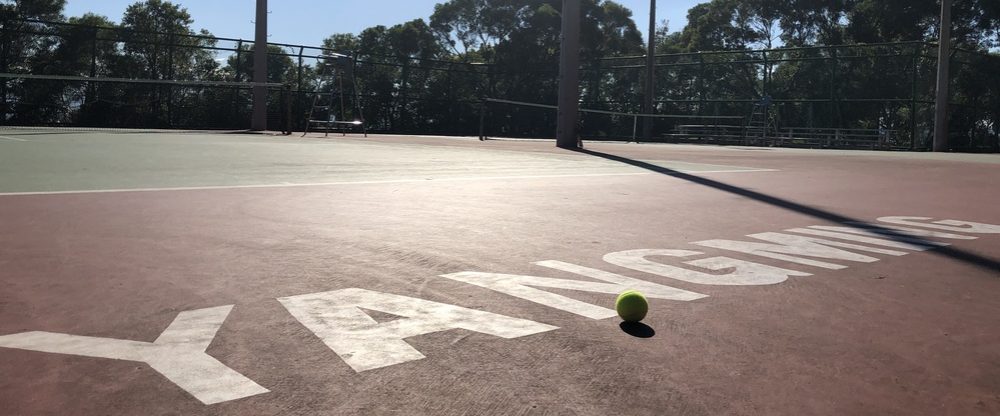
● Office:醫學二館307室
● Contact number:(02) 2826-7000 #67057
● E-mail:
wenchipan@nycu.edu.tw
● Personal website:Wen-Chi Pan (潘文驥), Sc.D.
● Education
○ Sc.D., Environmental Health, Harvard University
美國哈佛大學 公共衛生學院環境衛生研究所博士 (2012)
○ M.S., Environmental Health, Harvard University (2010)
○ B.S., Environmental Engineering, National Chung-Hsing University (2001)
● Experience
○ Post-doctoral Research Associate, Brown University (2014-2015)
○ Post-doctoral Research Fellow, National Chung Kung University (2012-2014)
● Professional Specialty
環境流行病學、因果中介模型、高維度統計分析
● 研究方向與興趣
利用流行病學方法,研究環境因子(如綠蔽度、交通工具、空氣汙染)與慢性疾病之關係。以因果中介模型(Causal Mediation Model)來探討慢性發炎在環境暴露與癌症之關聯性,並同時發展高維度統計模型,以分析中介因子及共暴露因子對於疾病的影響。
● Books (or research publications)
○ 代表著作
- Raymond S. Oh, Wen-Chi Pan, Abdullah Yalcin, Hong Zhang, Tomás R. Guilarte5, Gökhan S. Hotamisligil, David C. Christiani, and Quan Lu. Functional RNAi Screen Identifies System A Neutral Amino Acid Transporter 2 (SNAT2) As a Mediator of Arsenic-induced Endoplasmic Reticulum Stress. Journal of Biological Chemistry, 287(8), 6025-6034, 2012.
- Wei Jie Seow, Wen-Chi Pan, Molly L. Kile, Andrea Baccarelli, Quazi Quamruzzaman , Mahmuder Rahman, Golam Mahiuddin, Golam Mostofa, Xihong Lin, and David C. Christiani. Arsenic Reduction in Drinking Water and Improvement in Skin Lesions: A Follow-Up Study in Bangladesh. Environmental Health Perspective, 120(12), 1733-8, 2012.
- Wen-Chi Pan, Molly L. Kile, Wei Jie Seow, Xihong Lin, Quazi Quamruzzaman, Mahumuder Rahman, Golam Mahiuddin, Golam Mostofa, Quan Lu, David C. Christiani. Genetic Susceptible Locus in NOTCH2 Interact with Arsenic in Drinking Water for Risk of Type 2 Diabetes. PLOS One, 8(8), e70792. doi:10.1371/journal.pone.0070792, 2013.
- Wen-Chi Pan, Wei Jie Seow, Molly L. Kile, Elaine Hoffman, Quazi Quamruzzaman, Mahmuder Rahman, Golam Mahiuddin, Golam Mostofa, Quan Lu, and David C. Christiani. Low to Moderate Levels of Arsenic Exposure are Associated with Risk of Type 2 Diabetes in Bangladesh. American Journal of Epidemiology, 178(10), 1563-40, 2013.
- Ruoxi Hu, Wen-Chi Pan, Alexey V. Fedulov, William Jester, Matthew R. Jones, Scott T. Weiss, Teynold A. Panettieri, Jr., Kelan Tantisira, and Quan Lu. MicroRNA-10a Controls Airway Smooth Muscle Cell Proliferation via Direct Targeting of the PI3 Kinase Pathway. FASEB Journal, 28(5), 2347-57, 2014.
- Wei Jie Seow, Molly L. Kile, Andrea A. Baccarelli, Wen-Chi Pan, Hyang-Ming Byun, Golam Mostofa, Quazi Quamruzzaman, Mahmuder Rahman, Xihong Lin, and David C. Christiani. Epigenome-Wide DNA Methylation Changes With Development of Arsenic-Induced Skin Lesions in Bangladesh: A Case-Control Follow-Up Study. Environmental and Molecular Mutagenesis, 55(6), 449-56, 2014.
- Wei Jie Seow, Wen-Chi Pan, Molly L. Kile, Tong Lin, Andrea Baccarelli, Quazi Quamruzzaman, Mahmuder Rahman, Golam Mostofa, Muhammad Rakibuz-Zaman, Muhammad Kibriya,Habibul Ahsan, Xihong Lin,and David C. Christiani. Skin Cancer Gene INPPA5 variant Increases Susceptibility of Arsenic-Associated Skin Lesions in Bangladesh, Cancer, doi: 10.1002/cncr.29291, 2015
- Wen-Chi Pan, Luke D. Boyle, Elissa H. Wilker, Farzaneh A. Sorond, Brent A. Coull, Petros Koutrakis, Murray A. Mittleman, Lewis A. Lipsitz, and Gregory A. Wellenius. Ambient Temperature Alters Cerebral Hemodynamics in the Elderly. PLOS One, DOI:10.1371/journal.pone.0134034, 2015.
- Yen-Tsung Huang and Wen-Chi Pan. Hypothesis Test of Mediation Effect in Causal Mediation Model with High-dimensional Mediators. Biometrics, DOI: 10.1111/biom.12421, 2015.
- Wen-Chi Pan, Chuh-Da Wu, Mu-Jean Chen, Yen-Tsung Huang, Chien-Jen Chen, Huey-Jen Su, and Hwai-I Yang. Fine Particle Pollution, Alanine Transaminase, and Liver Cancer: A Prospective Cohort Study in Taiwan (REVEAL-HBV). Journal of the National Cancer Institute, 108(3), DOI:10.1093/jnci/djv341, 2016.
- Y.-C. Chen, K.-P. Yu, W.-C. Shao, C.-H. Tseng, and Wen-Chi Pan, Novel Mold-Resistant Building Materials Impregnated with Thermal-Reduced Nano-Silver. Indoor Air, 28:276-286, 2018.
- Hsiao-Yun Lee, Chia-Pin Yu, Chih-Da Wu, and Wen-Chi Pan, The Effect of Leisure Activity Diversity and Exercise Time on the Prevention of Depression in the Middle-Aged and Elderly Residents of Taiwan. Int. J. Environ. Res. Public Health, 15(4), 2018.
- Sheng-Wei Chiou, Chih-Da Wu, Yi-Tsai Chang, and Wen-Chi Pan. Roadway Density, PM2.5, and Hypertension: a Retrospective Cohort Study in Taiwan. Taiwan Journal of Public Health, 37(2), 125-136, 2018.
- Wing Tuen Veronica Leung, Tuen Yee Tiffany Tam, Wen-Chi Pan, Chi-Da Wu, Shih-Chun Candice Lung, and John D. Spengler. How is Environmental Greenness Related to Students’ Academic Performance n English and Mathematics? Landscape and Urban Planning, 181, 118-124, 2019.
- Chia-Ying Li, Chih-Da Wu, Wen-Chi Pan, Yi-Chen Chen, and Huey-Jen Su, Association between Long-term Exposure to PM2.5 and Incidence of Type 2 Diabetes in Taiwan: A National Retrospective Cohort Study. Epidemiology 2019. (accepted)
- Chern YR, Hung YC, Pan WC, Lung SCC, Wu CD. (2018). Association between surrounding greenness and bipolar disorder using spatial informatics: a study in Taipei. Taiwan Journal of Public Health, 37(5):514.
- Chang HT, Wu CD, Pan WC, SCC Lung, Su HJ. (2019). Association between surrounding greenness and schizophrenia: a Taiwanese cohort study. International Journal of Environmental Research and Public Health, 16(8):1415.
- Hsu CY, Wu JY, Chen YC, Chen NT, Chen MJ, Pan WC, Lung SCC, Guo YL, Wu CD. (2019). Asian culturally specific predictors in a large-scale land use regression model to predict spatial-temporal variability of ozone concentration. International Journal of Environmental Research and Public Health, 16(7):1300.
- Chang CH, Wang PW, Liang HW, Huang YF, Huang LW, Chen HC, Pan WC, Lin MH, Yang W, Mao IF. (2019). The sex-specific association between maternal paraben exposure and size at birth. International Journal of Hygiene and Environmental Health, 222(6):955-964.
- Lin WH, Pan WC, Yi CC. (2019). “Happiness in the air?” the effects of air pollution on adolescent happiness. BMC Public Health, 19:795.
